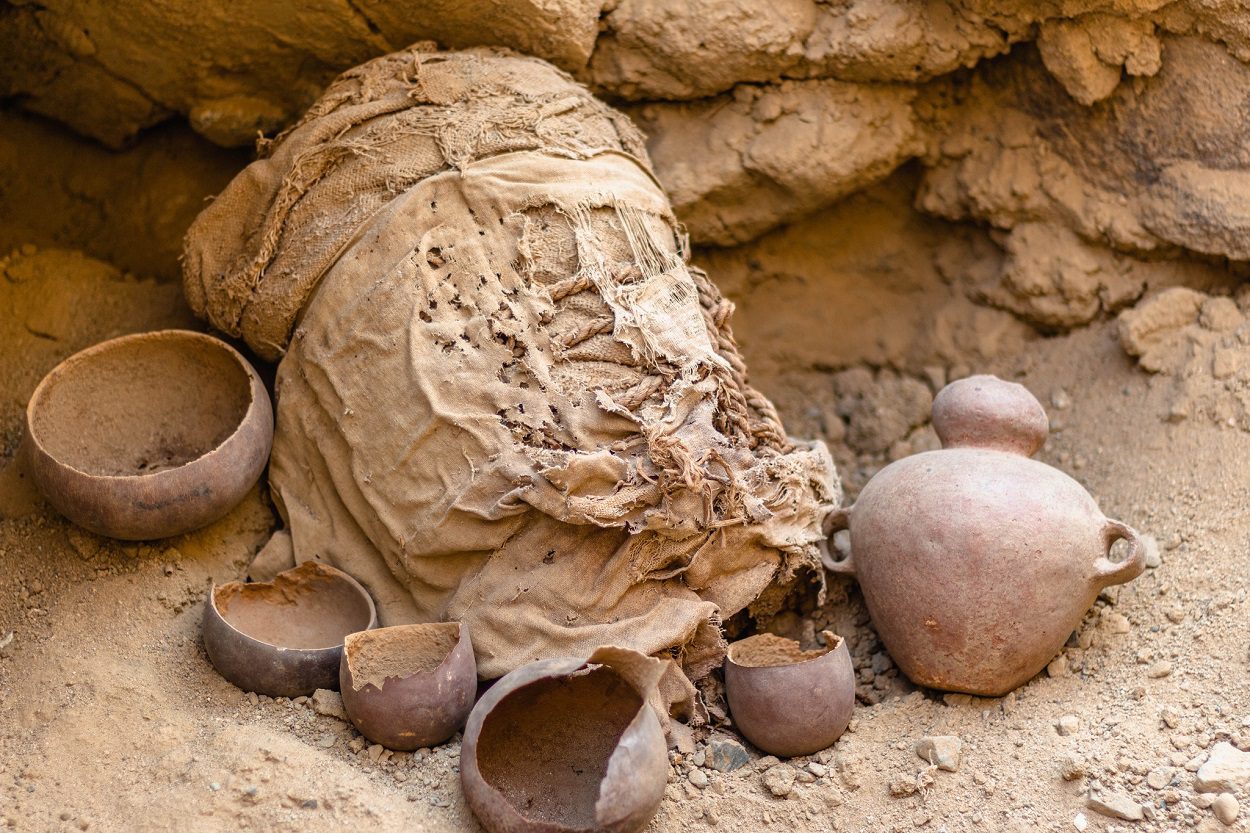Archaeologists from the Universidad Nacional Mayor de San Marcos have uncovered funerary bundles of children and the remains of seven adults at the entrance of a tomb in the Cajamarquilla Archaeological Complex in Peru.
Cajamarquilla is an ‘adobe’ city, which served as an important trading centre between the ‘altiplano’ region of the high Andes and the coastal communities of the Pacific coast. The city became a sophisticated centre for culture, religion, and commerce, but was eventually abandoned due to a series of climatic changes and natural disasters.
The pre-Inca remains were discovered outside the entrance of the tomb of the Cajamarquilla mummy, where researchers found six children wrapped in funerary bundles and the remains of seven adults, placed as a sacrifice to accompany the soul of the Cajamarquilla mummy on his journey to the world of the dead.
In a UNMSM statement, the researchers said: “We think that some of them could be the children, the wife and the closest servant of the Cajamarquilla mummy, who were sacrificed as part of the funerary rituals”.

Excavations were led by Prof. Pieter Van Dalen Luna and Yomira Silvia Huamán, who believe that the burial practices may indicate a change in funerary traditions representing a coastal ritual, in contrast to the Cajamarquilla mummy who was found wrapped in ropes.
The burials date from between AD 800 to AD 1200 and were accompanied with ceramic objects, and organic and botanical elements which will all be sent to the UNMSM laboratory located in the Colegio Real de San Felipe y San Marcos for further studies using radiocarbon (14C), DNA and a strontium analysis.
Header Image Credit : Kelly Vega – UNMSM







